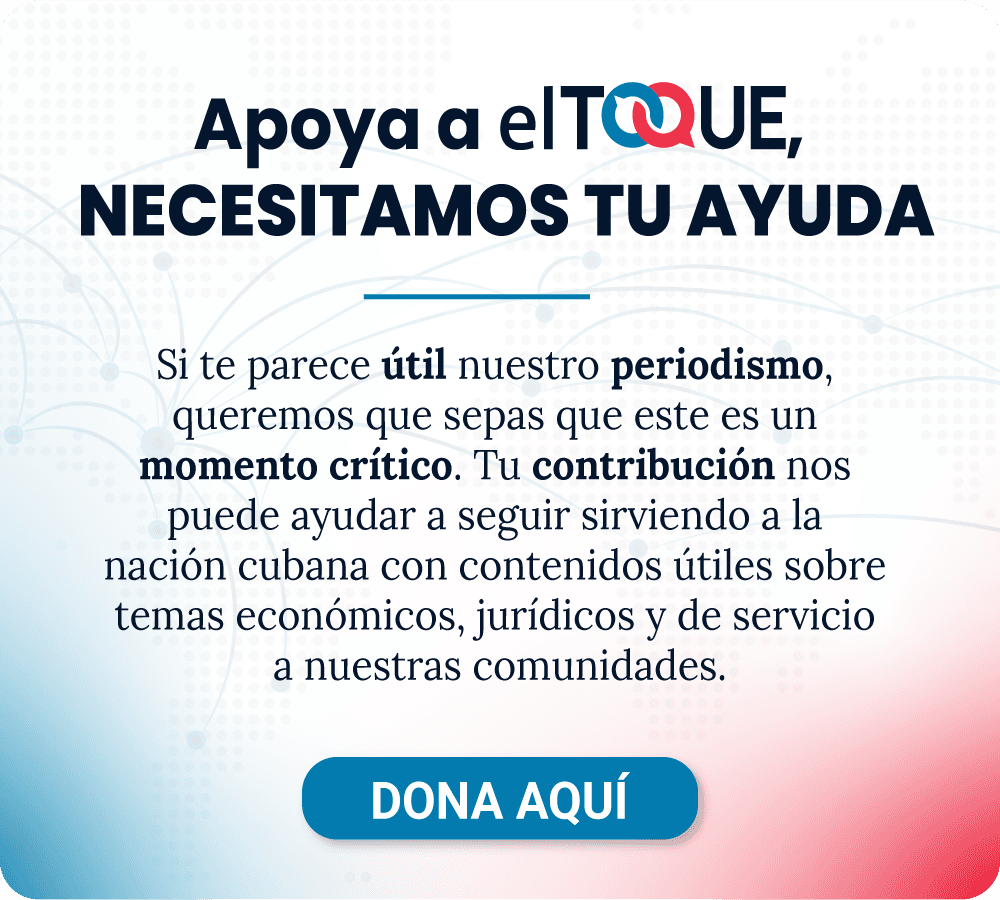“What Comes Out of Your Throat Is Black”: In Moa, Cuba, a Mining Town Suffocates Under Toxic Air

“What comes out of your throat is black. It’s like we’re breathing poison. These people are killing us slowly.” The chilling message, posted by journalist Mario Pentón on social media, captures the anguish of residents in Moa, a mining city in Cuba’s eastern province of Holguín. In recent days, citizen reports have drawn attention to a sharp spike in environmental pollution in this industrial hub—home to Cuba’s main nickel and cobalt processing plants.
A recent incident raised fresh alarm: at the Ernesto Che Guevara Reduction Furnace Plant, ten furnaces were operating simultaneously, belching visible clouds of gas and toxic dust. “This goes straight into our lungs,” another resident wrote online.
Environmental concerns in Moa are not new. For decades, locals have warned of worsening conditions and their impact on public health. Independent media have described how soot coats homes and skin alike, and how the town reeks of rot, acid, and sulfur.
A Town Built—and Choked—by Mining
Moa owes its existence to the extractive industry. Located atop one of the world’s largest nickel reserves, the area’s deposits are expected to remain productive for at least two more decades. It’s also home to one of the largest open-pit mines on the planet, which allows for cheaper extraction compared to underground methods.
The area was transformed into an industrial city in the latter half of the 20th century. Today, it hosts two active plants: the state-owned Ernesto Che Guevara and the Pedro Sotto Alba facility, run by Moa Nickel S.A., a joint venture between the Cuban government and Canadian mining giant Sherritt International.
Pedro Sotto Alba has been hailed by state media like Radio Havana Cuba as “a successful and sustainable joint venture.” But scientific research, personal accounts, and the town’s dismal living conditions all contradict that narrative.
A Legacy of Loopholes
In 1994, Cuban authorities passed Decree 194, allowing Moa Nickel to operate for a full decade without adhering to the country’s environmental regulations. Although the official “grace period” ended in 2004, the reality on the ground didn’t change. That year, Sherritt reported that it was still negotiating an “environmental license with certain standards.” Soon after, Cuba’s Ministry of Science, Technology and the Environment issued Resolution 139, exempting the company from immediate compliance with environmental laws.
The result has been years of severe, documented pollution. A 2011 study by Cuba’s National Institute of Hygiene, Epidemiology, and Microbiology found that sulfur dioxide and hydrogen sulfide levels in Moa’s air far exceeded legal limits. Between 2006 and 2009, monitoring stations registered sulfur dioxide peaks of 278 µg/m³—five times the allowable level—and hydrogen sulfide levels as high as 2,329 µg/m³, 290 times the limit. The daily average concentration of hydrogen sulfide was 50.8 µg/m³, while the Cuban standard allows a maximum of 8.
These pollution levels are closely linked to high rates of respiratory, dermatological, and cancer-related illnesses. In an investigative report by Connectas and Yucabyte, local oncologist Yanelis Barrabia Cuenca noted that lung cancer patients in Moa had higher mortality rates than those elsewhere in the country.
Another 2011 study, conducted by the Antonio Núñez Jiménez Higher Institute of Mining and Metallurgy in Moa, confirmed high incidences of bronchopneumonia, severe allergies, and workplace accidents linked to toxic leaks from mining operations.
Between Toxicity and Poverty
Between 2019 and 2023, Cuba exported over $2.3 billion worth of nickel, according to the Observatory of Economic Complexity. Yet little of that wealth is reflected in the lives of Moa’s residents. The city’s population dropped to 68,924 in 2023—nearly 7,000 fewer than in the 2012 census. In 2017 alone, more than 4,000 people left the municipality. The reasons: environmental degradation and worsening living conditions.
One former resident, Adela Rojas Preval, summed up the situation in a Facebook post: “The authorities have never allowed studies on this, but cancer rates of all kinds are exploding in Moa because of the extreme pollution.” Rojas noted that many stay only because “wages are relatively higher than in other parts of the country and because people receive more food assistance.” Still, she added, “waiting for our government to acknowledge the problem and act on it is a fantasy.”
Roughly 40% of Moa’s workforce is tied directly or indirectly to mining, but the industry’s revenues do little to improve local living standards. In Moa, horse-drawn carts are still a common mode of transportation. As of 2012, there was only one bus for every 10,000 people. With today’s worsening fuel shortages, getting around has become even more difficult.
Housing is often precarious—many families live in decaying wooden structures with patched-together roofs, dirt floors, and no indoor plumbing. In a report by Cubanet, residents showcased makeshift homes, wood-burning stoves, and the scarcity of basics like detergent or even water—needed to clean off the ever-present industrial grime.
“That dust is like grease—it only comes off with detergent and lots of water, and we don’t have either anymore,” wrote Yacelis Leyva, who also left Moa with her family because of the pollution.
Billions for “Environmental Protection,” but Residents See No Relief
Paradoxically, the National Office of Statistics and Information (ONEI) reported that Holguín was Cuba’s second-highest investor in environmental protection in 2023—over 382 billion pesos, or nearly $16 billion. Still, residents say local factories lack, or fail to properly use, pollution control systems like electrostatic filters. A cloud of toxic dust, carried by shifting winds, routinely drifts into residential areas.
In 2024, scientists at Cuba’s Center for Atmospheric Chemistry and Pollution (Cecont) confirmed that Moa is among the country’s top emitters of sulfur dioxide (SO₂), nitrogen dioxide (NO₂), and carbon monoxide (CO). The primary causes: outdated technology and a lack of adequate environmental treatment systems.
In 2015—the most recent year for which data is available—Holguín also ranked second in the country in terms of biochemical oxygen demand (BOD), discharging over 18,400 tons of organic-laden wastewater annually. Such pollution depletes oxygen levels in rivers and poses a major threat to aquatic life.
An Unsustainable Model
Experts are clear: Moa’s development model is unsustainable. Researchers at the University of Havana have urged the implementation of a comprehensive strategy—one that includes differentiated tax policies, regional food supply partnerships, incentives for private enterprise, and a redesign of the town’s labor and education systems. They also call for strict environmental policies that ensure public participation and access to information about the risks.
Without those reforms, they warn, Moa will remain a town forced to breathe poison to prop up a government that continues to abandon it.










Comments
We moderate comments on this site. If you want to know more details, read our Privacy Policy
Your email address will not be published. Mandatory fields are marked with *